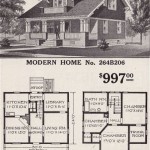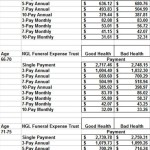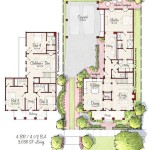Floor Plans for Mini Homes: Designing Your Dream Home in a Smaller Footprint
Mini homes, also known as tiny homes, continue to gain popularity as a sustainable and affordable housing alternative. These compact dwellings offer a unique opportunity to live intentionally with less, embracing simplicity and mindful living. A key aspect of designing a mini home is creating a functional and efficient floor plan that maximizes space and caters to your individual needs. This article explores different floor plan considerations for mini homes, highlighting essential elements to consider when planning your dream home in a smaller footprint.
Open Concept Living for a Spacious Feel
Open concept floor plans are a common feature in mini homes, as they help to create a sense of spaciousness despite the limited square footage. By eliminating walls between the living room, kitchen, and dining area, open layouts allow natural light to flow freely and visually expand the space. This design approach enhances the overall sense of openness and promotes a cohesive flow between different areas of the home. Consider incorporating multifunctional furniture pieces like sofa beds or dining tables that can be used for multiple purposes to maximize functionality.
Efficient Kitchen Design
The kitchen is the heart of any home, and mini homes are no exception. To maximize kitchen efficiency, consider incorporating the following design elements:
- Compact Appliances: Opt for smaller appliances like a compact refrigerator, microwave oven, and dishwasher to save space.
- Vertical Storage: Utilize vertical space with cabinets that reach the ceiling, creating additional storage without sacrificing floor space.
- Pull-out Shelves: Employ pull-out drawers and shelves to make it easier to access items stored in deeper cabinets.
- Slim Countertop Appliances: Choose countertop appliances that are narrow and streamlined, like a toaster oven or a coffee maker with a small footprint.
Versatile Bedroom Options
Mini home bedrooms are typically designed for efficient use of space. Here are some layout options:
- Loft Bedroom: A loft bedroom offers a unique and space-saving solution. It is located above the living area and accessed by a staircase or ladder. This design frees up floor space and can be used for a sleeping area, a home office, or a guest space.
- Murphy Bed: A Murphy bed, also known as a wall bed, folds away against the wall when not in use, creating a multi-functional area for both sleeping and other activities.
- Multifunctional Bedroom: Maximize space by incorporating a desk or dressing area within the bedroom, creating a combined space for sleeping, work, and storage.
Bathrooms that Pack a Punch
Mini home bathrooms are often compact, requiring careful planning to ensure functionality and comfort. Consider these design ideas:
- Small Walk-In Shower: Opt for a small walk-in shower unit instead of a bathtub to save space and provide a comfortable showering experience.
- Floating Vanity: A floating vanity creates the illusion of more space by minimizing the visual bulk of a traditional countertop vanity.
- Vertical Storage: Utilize wall-mounted shelves and cabinets to store toiletries and towels, maximizing space and minimizing clutter.
Outdoor Living Considerations
Even in a mini home, outdoor living is crucial. Incorporate a patio, deck, or porch to create a seamless transition from the interior and provide an additional space for relaxation, dining, or entertaining guests. Consider a compact fire pit or a small grill for an outdoor cooking area.
Floor Plan Design Considerations
When planning your mini home's floor plan, keep the following factors in mind:
- Lifestyle and Needs: Determine how many people will be living in the home, their daily routines, and their specific requirements. Consider the number of bedrooms, bathrooms, and other essential spaces.
- Budget: Establish a realistic budget for materials, labor, and appliances. This will inform the size and features of your mini home.
- Location: The climate and topography of your location will influence design choices. Consider factors like insulation, energy efficiency, and outdoor living spaces.
- Local Building Codes: Verify local building codes and regulations before beginning construction to ensure your mini home meets all requirements.
Professional Design Assistance
For a comprehensive and tailored floor plan, consider consulting with an experienced architect or designer who specializes in tiny homes. They can help you create a functional and aesthetically pleasing layout that caters to your unique needs and maximizes the use of limited square footage.

Tiny House Plans Small Floor

Tiny Home Living By Kintner Modular Builder Pennsylvania Quality Prefab Contractor

Tiny House Floor Plans 32 Home On Wheels Design

Mini Home Floor Plans Nu Solutions

Tiny House Plan Examples

Mini Home Floor Plans Nu Solutions

Tiny House Plans That Are Big On Style Houseplans Blog Com

Tiny House Floor Plan Nordic Homes

Tiny House Plans Small Floor

Mitchcraft Tiny Homes House Floor Plans Trailer Small








